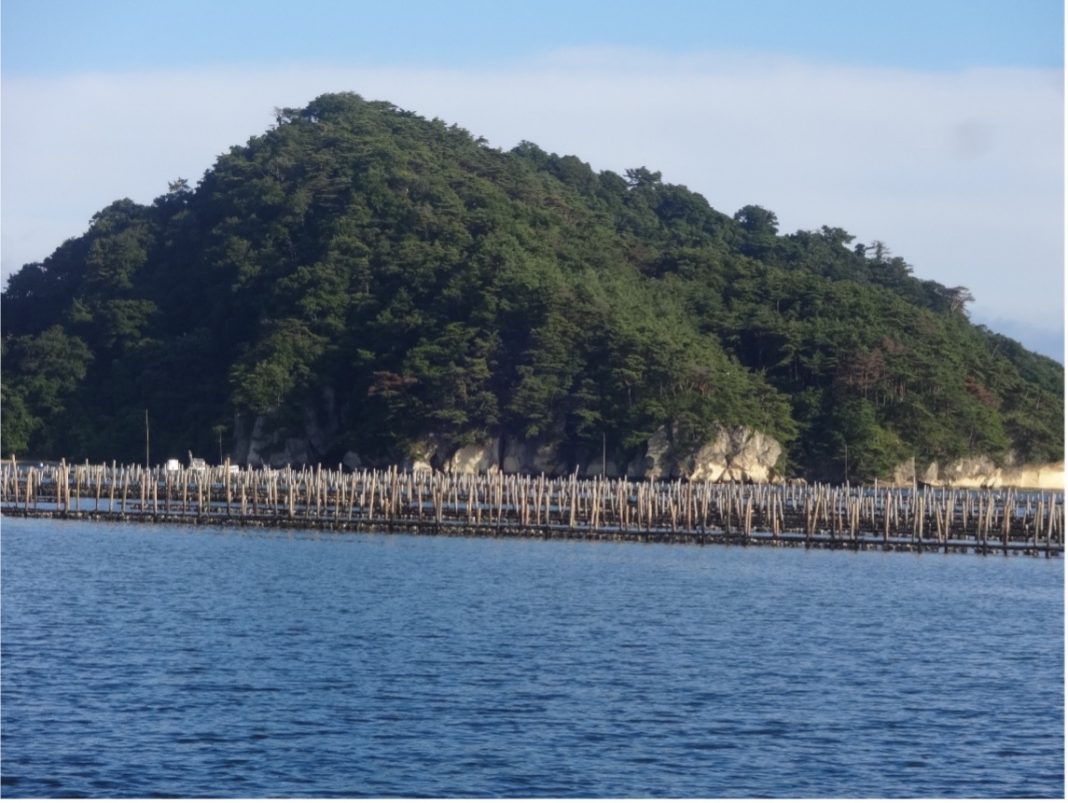Professor Saijo Kiyoshi at the Miyagi University of Education explains the work behind the bamboo circulation project of 2020, focusing on bamboo growth and utilization in Satoyama and Satoumi
Bamboo has been traditionally utilized for rural life in Satoyamna (hilly area) as materials, food ingredients, religious tools, festivals, toys etc., and bamboo forests has been an important component of Satoyama landscape.
Places of bamboo utilization, however, are not only limited in Satoyama but also in Satoumi (coastal fishing villages) in Japan surrounded by the sea on
all sides.
This article introduces bamboo utilization in oyster farming, relevant problems, and just started the project for bamboo circulation in Matsushima Bay of northeast Japan (Fig. 1) which has heavily damaged by the tsunami disaster in the 2011 East Japan Earthquake.

Bamboo utilization in oyster farming
We have the long rias coast on the Pacific Ocean side of northeast Japan (Fig.1).
Matsushima Bay, one of the three most scenic spots of Japan, located at the southernmost part of the coast, is famous for oyster production. (Fig. 2).
Due to the shallowness (less than 4 meters) of Matsushima Bay, the aquaculture shelves are made with a combination of vertical and horizontal bamboos. These structures, installed in the sea, are convenient for seedling picking and oyster growth (Fig. 2).
With one shelf needing around one hundred bamboos and the dense distribution of them, it has been theorised that the number of bamboos composing them amounts to approximately one hundred and twenty thousand in the whole Matsushima Bay.
This means that oyster farming is supported by a lot of bamboos from Satoyama.

Abundant waste bamboo from the oyster farming system
The bamboos used for oyster farming shelves become degraded within about three years as they are continually soaked in sea water and need to be replaced by new ones.
As a result, this used bamboo is becoming waste.
Rough estimates suggest that the number of waste bamboos amounts to about forty thousand per year (Saijo and Abe, 2023).

The newly started bamboo circulation project
We launched a bamboo circulation project in 2020 in an effort to utilize waste bamboo as a local resource by means of charcoal making.
Our patented charcoal-making method (Abe and Takahashi, 2017) can change bamboo into charcoal only within two hours.
The basic principle of this project involves a combination of reducing local waste, improvement of the physical environment by using the positive effects of charcoal as carbon storage to help global climate change countermeasures, and environmental education (Fig 3). A few of the other useful positive effects of charcoal include:
- Deodorizing
- Water quality purification
- Soil improvement
This project started from the research activity of the Miyagi University of Education in the initial stage and is now spreading to several stakeholders such as fisheries, citizens, and local government under cooperation with the NETOM (general incorporated association) established in 2022.
It is expected that one ideal style of bamboo circulation between Satoyama and Satoumi will be established in the near future.
Despite the potential for solving various problems, there are concerns surrounding this project, the largest being the remaining salinity in the waste bamboo and its negative effects.
Although undertaking research into this, a few results indicate the safety of charcoal from the waste bamboo, and a more detailed investigation into the data is desired for the full-scale development of the project.
The process of handling waste biomass from local fisheries is a widespread problem in Japan. The future achievement of this project would hopefully help local regeneration, and act as a solution for similar problems around the world.
References
-
- SAIJO Kiyoshi and ABE Hisao.: A project for remaking waste bamboo from oyster farming into useful charcoal at Matsushima Bay, Miyagi Prefecture, Japan. Journal of the Japan Carbonization Research, Volume 1; 2: 51-58. (In Japanese)
- ABE Hisao and TAKAHASHI Reijiro.: Demonstration test on a new charcoal making method with the shortening of initial combustion time. Wood Carbonization Research, Volume 13; 2: 66-71. (In Japanese)
NETOM
General Incorporated Association
ikadatan2022@gmail.com
Facebook
Instagram

This work is licensed under Creative Commons Attribution-NonCommercial-NoDerivatives 4.0 International.


